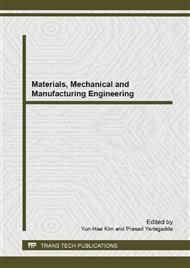p.3
p.7
p.13
p.18
p.22
p.27
p.31
p.35
Study on Bamboo Culm Used for Structure Axial Compression Performance Numerical Simulation
Abstract:
Bamboo culms as a structural building material have many advantages, are the ideal material for the future green building, and are increasingly brought to the attention of the industry. If it is widely recognized and adopted by structure and architecture, the complete bamboo culms performance parameters, testing methods, application of standards, and digital design and manufacturing methods are needed. Bamboo culms as a new type of building support, axial compression performance is directly related to the safety of the bamboo-framed buildings. This paper aims to study the structural properties of the bamboo culms compression test methods, and compression failure was simulated. Simulation results and experimental results are consistent. The model proposed in the work provides technical support for the structure of bamboo.
Info:
Periodical:
Pages:
13-17
Citation:
Online since:
November 2013
Authors:
Keywords:
Price:
Сopyright:
© 2014 Trans Tech Publications Ltd. All Rights Reserved
Share:
Citation:


